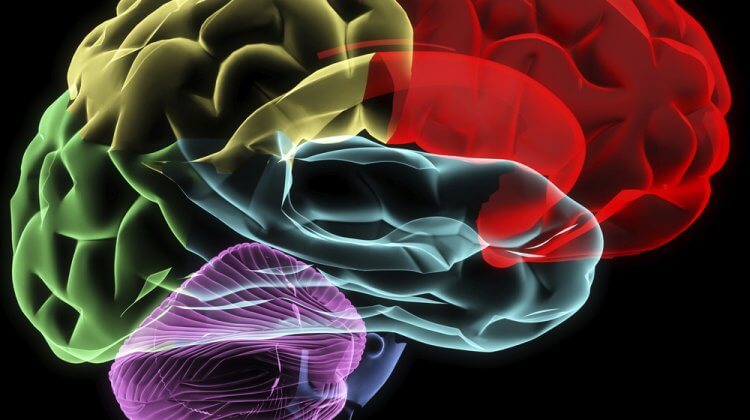
7. Psychological Dependence and Withdrawal Effects of Anabolic Steroids
For the most part, individuals use anabolic-androgenic steroids to significantly improve appearance and/or performance beyond what would be expected from training alone. Also, individuals using anabolic-androgenic steroids appear to believe that higher doses and continued use result in greater gains, a belief that receives support from animal biochemistry studies (Bardin et al. 1990), from clinical responses in some anaemias (Sanchez-Medal et al. 1969), as well as from studies in athletes (Alen &Hakkinen 1985; Alen et al. 1984, 1985, 1987; Forbes 1985; Hakkinen & Alen 1986; Hervey et al. 1976, 1981; Kilshaw et al. 1975). When individuals discontinue using anabolic-androgenic steroids their size and strength diminish, often very dramatically (Alen & Hakkinen 1985; Alen et al. 1984, 1987; Forbes 1985; Hakkinen & Alen 1986), and this outcome, as well as any psychological effects of use which serve to create a new body image, improved self-esteem, heightened libido and general euphoria, are thought to motivate continued use of anabolic-androgenic steroids (Yesalis et al. 1989a, 1990b).
Yesalis et al. (1989a) found that approximately a quarter of adolescent anabolic-androgenic steroid users reported behaviours, perceptions, and opinions which as consistent with psychological dependence. These high school users were significantly different from nonusers in several areas including self-perceptions of health and strength. The majority perceived their relative strength to be greater than average and their health as very good or better. Also, heavy users (+/= 5 cycles) were more likely, relative to other users, to use injectable anabolic-androgenic steroids, express intentions to continue to use anabolic-androgenic steroids regardless of health consequences, and take more than one anabolic-androgenic steroid at a time.
As with corticosteroids (Alcena & Alexopoulos 1985; Alpert & Seigerman 1986; Amatruda et al. 1965; Byny 1976; Dixon & Christy 1980; Judd et al. 1983; Kaufmann et al. 1982), increasing attention and discussion is being focused on the withdrawal effects that athletes encounter when they cease use of anabolic-androgenic steroids. Interestingly, many of the same effects attributed to anabolic-androgenic steroid use are alleged to occur following anabolic-androgenic steroid cessation. Purported withdrawal effects include mood swings, violent behaviour, rage and depression, possibly severe enough to lead to thoughts of suicide (Brower et al. 1989a,b 1990; Goldman et al. 1984; Editorial 1989). Pope and Katz (1988) report that 5 of their subjects (12%) developed major depression while withdrawing from anabolic-androgenic steroids. Duncan and Shaw (1985) suggest that weight and fluid loss may worsen (or be the cause of) the impending depression.
Tennant et al. (1988) recently described the case of apparent physical dependence on anabolic-androgenic steroids in a 23-year-old male bodybuilder who had been using anabolic-androgenic steroids (methandrostenolone 75mg and methenolone 150mg intramuscularly every other day and oxandrolone 20mg and oxymetholone 100mg orally each day) for 3 years and who was unable to abstain from anabolic-androgenic steroids without experiencing severe withdrawal symptoms, including depression, disabling fatigue and violent, paranoid, and suicidal thoughts and feelings. Urinalysis was negative for alcohol, amphetamines, cannabinoid metabolites, cocaine metabolites, opioids and phencylcidine. Classic opioid withdrawal symptoms appeared following naloxone administration and anabolic-androgenic steroid cessation. However, despite being treated with clonidine over the next 6 days and a decrease in withdrawal symptoms, the patient left the treatment programme and apparently resumed use of anabolic-androgenic steroids 7 days after admission.
Brower et al. (1989a) reported the case of a 24-year-old male noncompetitive weightlifter whose dependence on a combination of anabolic-androgenic steroids (200mg of testosterone cypionate intramuscularly every 3 days, 100mg of nandrolone decanoate intramuscularly every 3 days, 25mg of oxandrolone orally daily, 30 to 45mg of bolasterone subcutaneously every 2 to 3 days, and 1000 to 2000 units of human chorionic gonadotrophin intramuscularly every 2 to 3 days) met criteria for psychoactive substance dependence. Tolerance, withdrawal symptoms (depression, fatigue), and the use of anabolic-androgenic steroids to alleviate withdrawal symptoms had occurred. An uncontrolled pattern of anabolic-androgenic steroid use continued, despite adverse consequences such as severe mood disturbance (irritability, euphoria, anxiety, depression), marital conflict, and changes of the patient’s usual values and life goals.
Hays et al. (1990) also have reported a similar case in which a 22-year-old male noncompetitive weightlifter who had been using anabolic-androgenic steroids for 9 months (25mg of oxandrolone daily, nandrolone phenpropionate, testosterone propionate intramuscularly each week, and methandrostenolone) presented with complaints of depression and inability to cease anabolic-androgenic steroid use. The patient felt depressed, fatigued, had occasional temper outbursts, and slept less when taking the steroids. Steroid craving and decreased self-esteem were reported between periods of steroid use. Following 1 week and improvement in mood, the man was discharged from the hospital chemical dependency treatment unit.
In another study by Brower et al. (1990) of 8 anabolic-androgenic steroid-using weightlifters, all reported both withdrawal symptoms and uncontrolled use despite adverse consequences (feeling nervous, irritable, or depressed). Psychiatric, especially depressive, symptoms were prominent in most of the dependent users. Brower (1990) has suggested that some conventional drug abuse treatments such as pharmacotherapy (used with cocaine withdrawal) or psychotherapy may be effective with dependent anabolic-androgenic steroid users.
Finally, Kashkin and Kleber (1989) in their review, suggest that the psychoactive effects, withdrawal symptoms, and underlying biological mechanisms of steroid hormones, including anabolic-androgenic steroids, appear similar to the mechanisms and complications accompanying cocaine, alcohol or opioid abuse. They concur that a proportion of anabolic-androgenic steroid abusers may develop a sex steroid hormone dependence disorder and that treatment should be based on research into steroid effects on both opioid and aminergic neurotransmission systems and relapse prevention. It is both interesting in this regard, and suggestive of the difficulties facing drug abuse researchers and educators, that a study by Johnson et al. (1970) of the effects of testosterone enanthate (200mg intramuscularly once every 4 weeks over 7 months) on body image and behaviour in 5 young mentally retarded males with Klinefelter’s syndrome included not only a significant change from a feminine to a masculine body image, increased assertiveness, increased goal-directed behaviour and heightened sexual drive, but the majority of subjects expressed ‘…a desire to become further masculinised.’
These preceding findings must be tempered by the fact that individual responses to different anabolic-androgenic steroids, doses, and lengths of administration likely vary somewhat unpredictably. Further, beyond these reports, no threshold dosage that may produce these effects (mood swings, violent behaviour, rage, depression) or timecourse concerning the onset or elimination of these effects once anabolic-androgenic steroid use has been initiated or terminated have been fully documented (which may depend, in part, on the length of anabolic-androgenic steroid use, particular desired as well as undesired effects experienced, and a host of other factors). As Svare (1990) has indicated, several critical variables involved in modulating the behavioural effects of androgens in animals including sex, dose/duration, route of administration, type of androgen, and genotype, must be addressed when examining human anabolic-androgenic steroid abuse. Finally, weighttraining per se may be addictive in the sense of promoting compulsive, stereotypic, and repetitive behaviour to include not only the strength training but dieting, drug use and a host of other lifestyle variables as well.
Part 8: Prevention and Treatment of Anabolic-Androgenic Steroid Abuse
Originally appearing in Sports Medicine 10(5) 303-337. 1990. Copyright © 1990 by Adis International Limited. All rights reserved. Reprinted by MESO-Rx with permission. Any duplication of this document by electronic or other means is strictly prohibited.
About the author
Warning: Undefined array key "display_name" in /home/thinksteroids/public_html/wp-content/plugins/molongui-authorship-pro/includes/hooks/author/box/data.php on line 11
Warning: Undefined array key "display_name" in /home/thinksteroids/public_html/wp-content/plugins/molongui-authorship-pro/includes/hooks/author/box/data.php on line 11
Warning: Undefined variable $show_related in /home/thinksteroids/public_html/wp-content/plugins/molongui-authorship/views/author-box/parts/html-tabs.php on line 30



Leave a Reply
You must be logged in to post a comment.